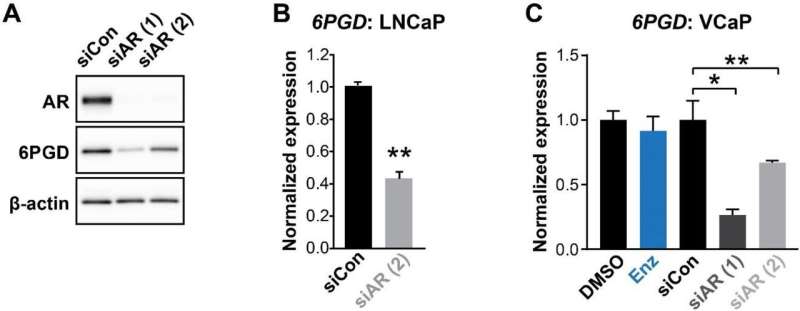
South Australian medical researchers have identified a new way in which prostate cancer cells use glucose to grow and survive, which in turn could be the secret to destroying them.
In a new study published in the international journal eLife, researchers at Flinders University and The University of Adelaide used cutting-edge technologies to analyze this metabolic pathway in prostate cancer cells, in the process demonstrating that it represents a weakness in prostate tumors that could be exploited to develop new therapies.
Associate Professor Luke Selth from the Flinders Health and Medical Research Institute (FHMRI) at Flinders University and Freemasons Centre for Male Health and Wellbeing (FCMHW) says the study provides important insights into how prostate tumors change their metabolism to enable rapid growth and resistance to therapies.
“Prostate cancer cells are very different to normal prostate cells in many ways but one of the most striking differences is how tumors use sugars and fats for energy production and to rapidly grow. In this study, we found that a protein called 6PGD can support the survival of prostate cancer cells when they are being challenged with a hormonal therapy that is currently used in the clinic.”
The study found that switching on 6PGD enables the cancer cells to use glucose for the generation of antioxidants and to make the building blocks for growth.
“We think this is a significant finding because it potentially represents a new mechanism by which prostate cancer cells can become resistant to hormonal therapies, which are the standard-of-care treatment for men with advanced and metastatic disease,” says Selth.
Professor Lisa Butler from the University of Adelaide and South Australian Health and Medical Research Institute (SAHMRI) and co-senior author of the study, says the results are a step forward in our understanding of the unique metabolism of prostate tumors.
“Using the latest technologies, we generated an incredibly detailed view of how 6PGD influences prostate cancer metabolism. Importantly, our work has pinpointed some clinical agents that may be able to shut down this pathway, so it is possible that our findings could eventually be used to develop a new targeted therapy for this common disease,” says Butler.
Indeed, the study showed that 6PGD inhibitors could kill cancer cells grown in lab dishes and even in real tumors taken directly from Adelaide cancer patients, and these inhibitors were more effective when combined with a hormonal therapy.
Flinders University

